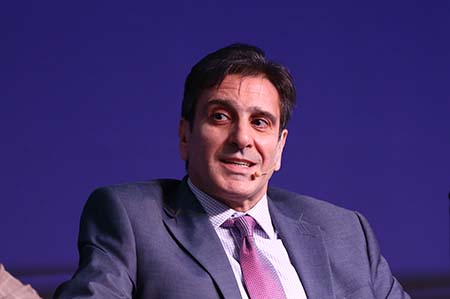With per capita consumption of social media across the MENA among the highest in the globe, the second panel discussion on OTT and social media made for compelling listening at the 2018 ASBU BroadcastPro Summit. Titled “OTT & Social Media: Driving Video Entertainment”, the panel covered issues such as the video push by social media […]
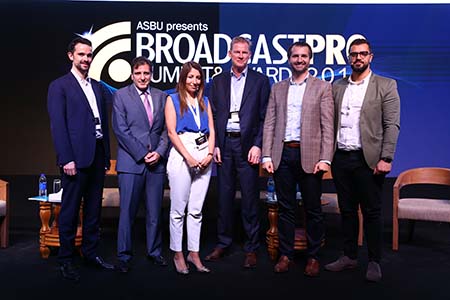 With per capita consumption of social media across the MENA among the highest in the globe, the second panel discussion on OTT and social media made for compelling listening at the 2018 ASBU BroadcastPro Summit. Titled “OTT & Social Media: Driving Video Entertainment”, the panel covered issues such as the video push by social media platforms, sports as a genre, content commissioning by OTT and social media platforms, and engaging audiences while keeping the experience secure. The panel discussion was sponsored by security solutions provider Irdeto, with Twitter as our social media partner.
With per capita consumption of social media across the MENA among the highest in the globe, the second panel discussion on OTT and social media made for compelling listening at the 2018 ASBU BroadcastPro Summit. Titled “OTT & Social Media: Driving Video Entertainment”, the panel covered issues such as the video push by social media platforms, sports as a genre, content commissioning by OTT and social media platforms, and engaging audiences while keeping the experience secure. The panel discussion was sponsored by security solutions provider Irdeto, with Twitter as our social media partner.
The high-profile panel featured Kinda Ibrahim, Director of MENA Partnerships at Twitter; Fares Akkad, Head of Media Partnerships for Facebook & Instagram for MEA, Turkey & Pakistan; Carlo Nohra, VP, GM, WWE Middle East FZ-LLC; Ahmed Qandil, Head of Product Management – Digital, MBC Group; and Ronald Peters, Segment Manager at Irdeto.
Moderator Christophe Firth, Principal at A.T. Kearney, set the ball rolling by asking Fares Akkad about Facebook’s investment in original content and how it compared to investments made by the likes of Netflix and Amazon. Akkad responded: “We are looking to showcase video content that is social and interactive. While we are funding original content in the areas of sports, news and general entertainment to show what is possible, these investments are only the tip of the iceberg in terms of what viewers can expect on the platform. We want broadcasters and content publishers to see the benefits of the platform and start producing and monetising content.”
Partnerships and aggregation are key strategies to deliver a much bigger value to audiencesAhmed Qandil, Head of Product Management Digital, MBC Group
“Would Twitter like to see FAANG have a ‘T’ added or is the platform in a different space?” was the opening salvo from moderator Firth to Twitter’s Kinda Ibrahim.
“We are not content experts – we work with publishers,” responded Ibrahim, leaving the broadcast audience in no doubt that she was on their side. “Some of our partners produce content that is bespoke to Twitter because it aligns heavily with already-existing conversations on our platform. Content publishers choose what is best to offer in terms of keeping their editorial voice while offering content that is specifically engaging to a Twitter audience. This year, we had three major video initiatives starting with #HawanahZein, the late-night Ramadan show that captured conversations in a light, snackable manner. During the FIFA World Cup, we had #YallaGoal and to highlight international fashion week, we offered a local perspective in collaboration with the Saidaty Group titled #FrontRow.”

With the digital-equals-monetisation mantra barely a couple of years old in the region, Firth turned to the one organisation that had recognised the digital opportunity early on.
“As one of the pioneering content owners in direct-to-consumer online video, since you launched your own service in 2014,” Firth said addressing Carlo Nohra of WWE ME, “what is your view on OTT and social media in the region?”
Confirming that having a digital presence was made an integral part of every element of the WWE organisation several years ago, Nohra highlighted some initiatives with social media platforms. “With Facebook, we launched WWE Mixed Match Challenge, specifically shot for mobile devices, that pitted a male and female team versus another male and female team in a tag format. What was critical to the idea was that it was an engagement platform for fans. It wasn’t just us selecting and putting up the matches. Our fans participated in creating team names and who will start the matches. Over an eight-week period, Season 1 generated 35m views.”
Turning to Ahmed Qandil of the MBC Group who oversees Shahid, one of the leading Arabic VOD services, among other digital initiatives Firth asked about challenges in scaling the platform. Offering an overview of the peculiar challenges the region faces, Qandil said: “Anyone who wants to operate in the OTT and digital space in the region needs to take into consideration the important issue of rights protection. We at MBC have a dedicated team combating the menace. Also, given the relatively small size of content libraries in the region for Arabic productions and the consumers tendency to binge-watch on digital platforms, we work with content partners to deliver scale. Partnerships and aggregation are key strategies to deliver a much bigger value to audiences.
Following the recent agreement between Irdeto and Alibaba Cloud to secure OTT services in China, Firth asked Ronald Peters of Irdeto what the region can learn from the company’s global experience.
While rights holders are deploying watermarking technologies to protect their content, they need to recognise that the pirate is a competitor Ronald Peters, Segment Manager, Irdeto
On the increasing integration of social media platforms in content production, Peters said: “Social media was considered a separate stream until a few years ago. When the audiences started to build, production houses began to integrate social media in their operations, allowing for easy scalability of operations. The move to the cloud on the part of broadcasters and content providers is also a move in the right direction. Ten years ago, these very entities were investing in their own CDNs, and now fortunately they are looking at providers such as AWS, among others, to concentrate on their core competencies.”
The 20-minute episodes of WWEs Mixed Match Challenge on Facebook reflect a contemporary approach to production, with elements tailored for mobile consumption and social interaction, including the ability for fans to engage with the stars during the show. Firth asked Akkad and Nohra how the partnership between WWE and Facebook got off the ground.
Highlighting the synergy between the two in terms of their objectives as key, Akkad of Facebook said:
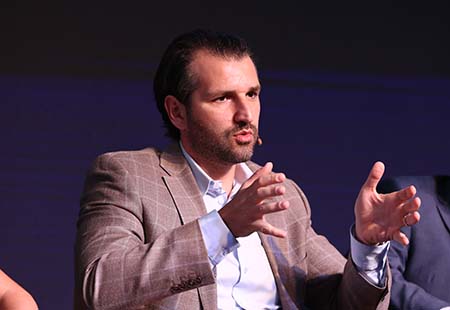
“WWE has a massive following and performs well on social media. With their progressive digital-first approach, we were keen on getting their content. The whole partnership started with superstars doing live events with influencers. We then saw the opportunity to promote attendance to events and act as a funnel for people interested in merchandising. Similarly, with the La Liga rights for India, we are producing content with Mediapro. We are not reinventing anything. We are creating new opportunities for existing broadcasters.”
Nohra revealed that WWE produced 1,500 hours of original content in 2017 and the vast majority of the five billion video views in that year came from social and digital viewership. He said: The way we look at content is whether it serves reach, engagement and economics, and based on that we decide on the distribution platform. At the heart of our tiered-content strategy is PTV which is the most profitable platform for the monetisation of our flagship shows Raw and SmackDown, for which five hours of original programming is produced a week. In addition, we also have reality series and documentaries.
“With social and digital platforms, we aim to build the brand, attract next-gen viewers and promote the direct-to-consumer WWE Network, which optimises value of premium and long-tail content with which we super-serve our core fans.”
With social and digital platforms, we aim to attract next-gen viewers We create bespoke content for YouTube and Facebook Carlo Nohra, VP, GM, WWE Middle East FZ-LLC
Asked about a similar partnership with MBC, Kinda Ibrahim of Twitter said: “We want to make sure that our partners are in line with building new audiences, increasing engagement and finding new sources of revenue. With partners such as MBC creating bespoke content or a short form of their existing content, we advise broadcasters such as them to tailor their strategy based on the platform and how the audience engages with the platform.”
While we are funding original content these investments are only the tip of the iceberg in terms of what viewers can expect on the platform Fares Akkad, Head of Media Partnerships, Facebook & Instagram, MEA, Turkey & Pakistan
Elaborating on MBC’s digital initiatives, Qandil said: “Every social media platform is working towards a different kind of objective, and it is by design. Twitter is a great source of conversation in KSA and we value that a lot. We are working with Twitter on ways to develop various short-form concepts. Vertical videos are increasingly popular, and we are transforming our operations to repurpose content according to the platform requirements.”
Underscoring the need for speed for OTT operations, Peters of Irdeto briefly spoke of the advantages in terms of cost, mobility, time to market and the multimedia streaming capabilities of open platforms for set-top boxes, such as Android TV. Peters added: “Play stores containing social media and OTT service apps are proving to be very popular with consumers. Operators need to evaluate how to leverage open platforms with play stores to offer more choice to their customers.”
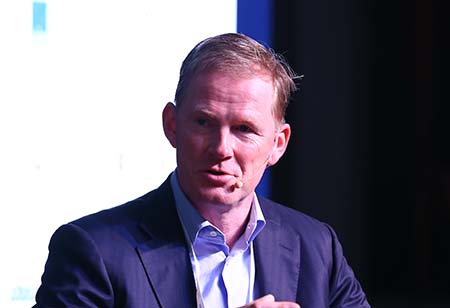
Firth asked if social media platforms have ambitions to become super content aggregators such as Amazon is shaping to be. Stating that Amazon has multiple revenue streams with content being one of them, Akkad said that Facebook is supported by advertisements rather than being a subscription-based platform.
He continued: “We are keen on the engagement aspect because it helps people feel closer to their content. What we are seeing now is viewers are spending longer on content, and we are working on making it user-friendly from the VOD standpoint. The nature of content is still shaping – it might not be movies such as on Netflix and Amazon. Most definitely episodic and live content seem to work.”
With a partnership with Amazon, Nohra added: What drives our decisions is where our fans are. Our existing distribution through pay-TV extends to 180 countries, 800 million fans and 25 different languages. Until we find a replacement for that, we will continue to explore what else we can do based on what our fans want.
With video generating a reported 50% of advertising revenues on Twitter, Firth asked Ibrahim if the platform is seeing similar growth in the Middle East. Confirming that video is one of the fastest-growing products for Twitter in the region, Ibrahim said: Increasingly we are working with partners on a one-to-one bespoke manner, as opposed to a marketplace scenario. We see a lot of demand from brands to associate with a particular publisher. The publisher benefits from monetisation since we operate in a revenue-sharing model while also garnering additional audiences for their content.
On the knotty issue of payment and the general willingness to pay for content, MBCs Qandil said that despite weak credit card penetration, there is a case for optimism. He explained: Local providers such as the SADAD payment system in KSA and Fawry, a pioneering e-payment network in Egypt, offer local opportunities for improving the payment system. Of course, region-wise, more work needs to be done to improve payment infrastructure. Regarding AVOD platforms, we have seen advertisers appreciate the long engagement our viewers have on our platform, and they see it as distinct from the short-form or snackable content on other platforms.
Elaborating on the issue of piracy, Peters of Irdeto sees consumer awareness improving. What he urges is an attitudinal shift among rights holders and content providers. “While rights holders are deploying watermarking technologies to protect their content, they need to recognise that the pirate is a competitor. Battling with criminals as competitors is far more difficult than competing with a legitimate service. It is then more urgent to win the battle by leveraging anti-piracy services in addition to technologies to rapidly find pirate services and shut them down.”
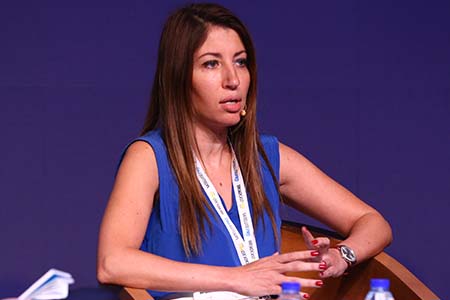
Nohra spoke of the need for legislation where it doesn’t exist and for enforcement where it does, in fighting piracy. Qandil stressed the combined need for technology and enforcement, and Ibrahim stressed Twitters zero tolerance for infringements on intellectual property rights., Qandil stressed the combined need for technology and enforcement, and Ibrahim stressed Twitter’s zero tolerance for infringements on intellectual property rights.
Switching gears, Firth asked about sports, referring to the multi-year deal Facebook has inked with the US National Football League and Twitter’s deal with the PGA Tour, among other high-profile deals. “Is this experimentation or part of a long-term strategy?” he asked, echoing the view of many in the industry who believe these initiatives are a grand experiment with some long-term potential.
Stressing that sports offers the highest response in terms of audience consumption, Ibrahim spoke of the complementary nature of the partnerships. “While our content partners have the sporting rights, we work towards striking a deal to showcase near-live clips or simulcast, for instance, to build incremental audiences that results in monetisation. We complement the rights owners’ efforts and do not compete head-to-head for those rights.”
Increasingly we are working with partners on a one-to-one bespoke manner, as opposed to a marketplace scenario Kinda Ibrahim, Director, MENA Partnerships, Twitter
Highlighting the immediate, social aspect of live sports that works well on social media platforms, Akkad highlighted some of the tools Facebook has built, including Watch Parties, which allow private viewing and live interaction between viewers. While acknowledging sports rights are expensive, the positive spillover effect for the platform is undeniable when studies indicate that live videos on Facebook generate six times more discussion than recorded videos. Akkad also hoped that with Oculus Rift, sports viewing will become more immersive.
Aiming for a sports niche not fully exploited in the region, Qandil of MBC said: We are looking at gaming specifically. We believe there is a huge opportunity here. It has been demonstrated by Amazons Twitch.TV initiatives and also YouTube Gaming. We are looking at different business models to introduce in this region.
For the secret sauce on how WWE has made sports and entertainment work for so many years, Nohra emphasised the complementary nature of social media platforms: Our OTT platform has our core audience where we deliver content for those who cannot have enough of us. That is not where we cultivate new audiences. Social and digital platforms complement our content and extend our viewership. A good example is WWE Evolution, the women’s pay-per-view event. The first half-hour of the show was available on Twitter, and the audience needed to go to our network to watch the rest.
The news genre has seen similar movement. The likes of Bloomberg have signed deals with Twitter. Firth asked how the approach to news fits into the overall strategy.
Confirming that it is a continuation of strategy, Ibrahim said: “Twitter has always been a place to discover news, with news outlets often breaking news on Twitter. Again, here we help complement an ongoing conversation and will continue to do so in the future.”
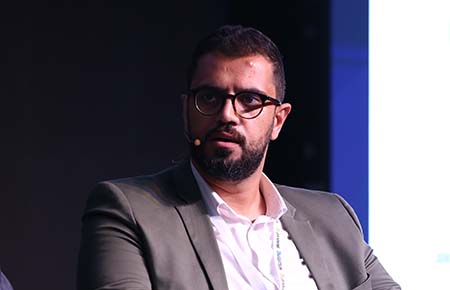
To an interesting audience question on how WWE sees the relationship evolving between its traditional and digital platforms in the next five years, Nohra said: “We invested in our own digital platform in 2013-2014. We were ahead of the curve. When we invested in our own platform, the fear was that we would cannibalise the core element of our business, namely the pay-per-view shows through our partners’ channels. However, we ended up quadrupling our revenues. We are at the stage where both platforms coexist and serve different segments, and in five years time, we are well-positioned to act on whatever our audience demands.”
To an audience question on how comedy and general entertainment fit into the multi-layered revenue streams of social media platforms, Akkad of Facebook underscored the social value of content, referring to fashion influencer Huda Kattan building a multi-billion-dollar beauty brand purely from content posted on Instagram. “From the content standpoint, the goal is social value. When you have this social value figured out, the opportunities to pitch advertisements and other services are limitless and considered part of a fair transaction.”
To conclude the discussion, Firth put the classic marriage counsellor question to the panelists to reflect on what content owners needed from their social media partners, and vice versa, to make the marriage happier.
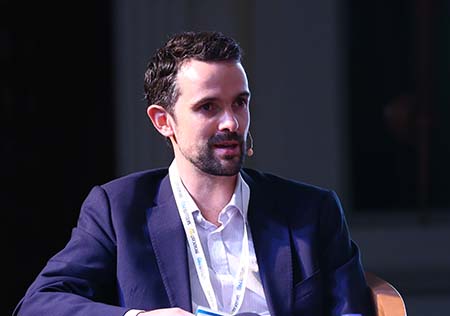
Qandil of MBC made a call for transparency from social media platforms. Almost in response, Akkad of Facebook said: “We want broadcasters to understand how people are consuming content on a particular social media platform. Our algorithms reflect those patterns, and knowing how consumers are best consuming content will ensure a winning proposition for broadcasters to plan their content around.”
Ibrahim asked for more content that works, resulting in more monetisation opportunities for content publishers. “Let’s make that work,” she added.
Carlo Nohra of WWE wrapped up the engaging debate with a one-item wish list: “We want more targeted audiences.”
